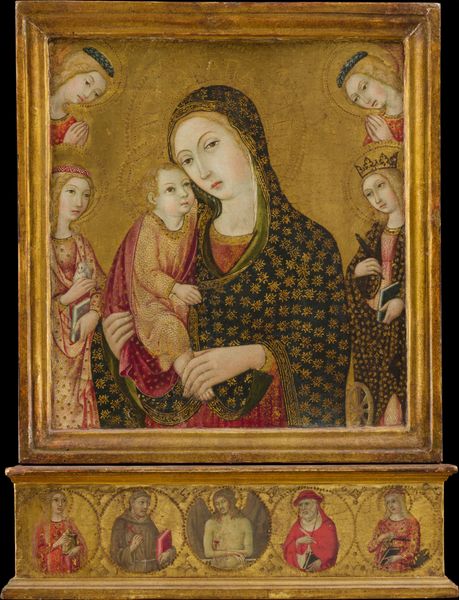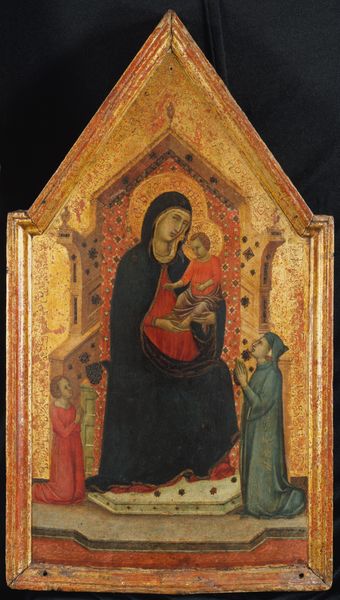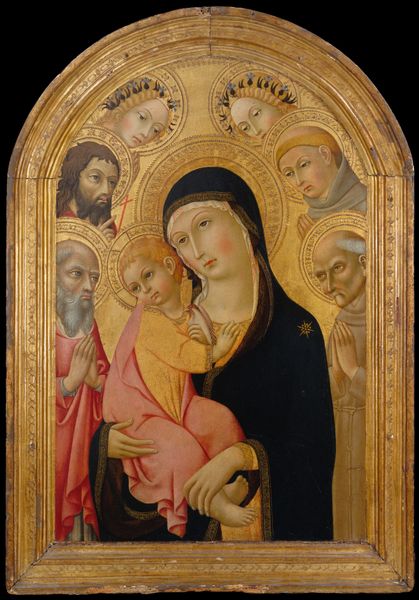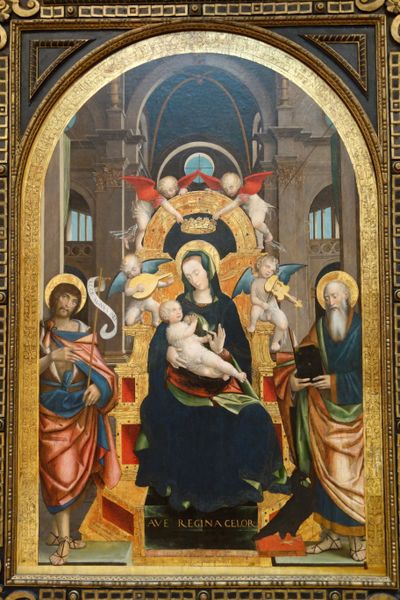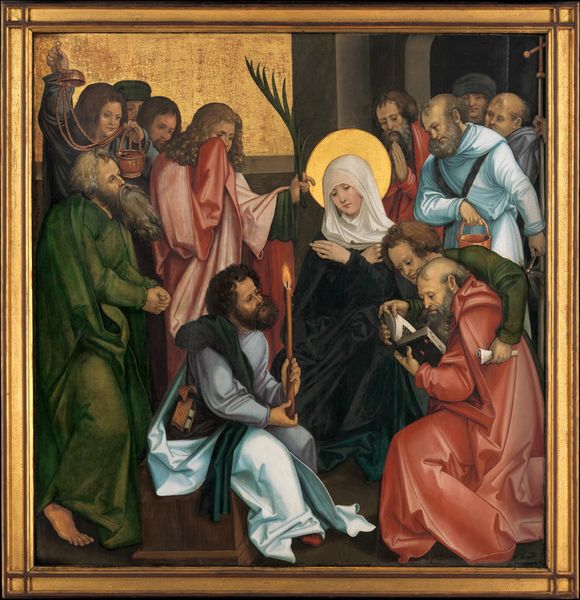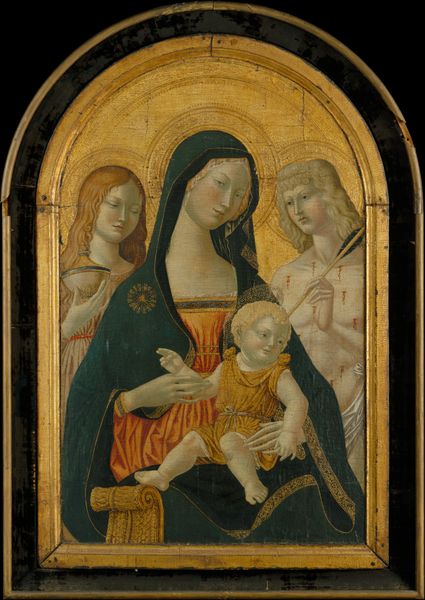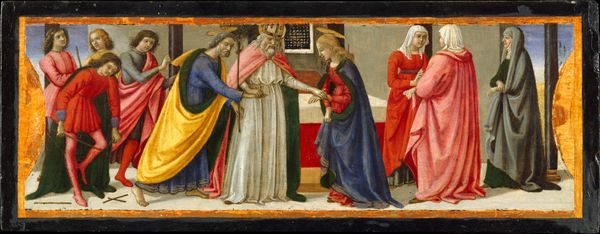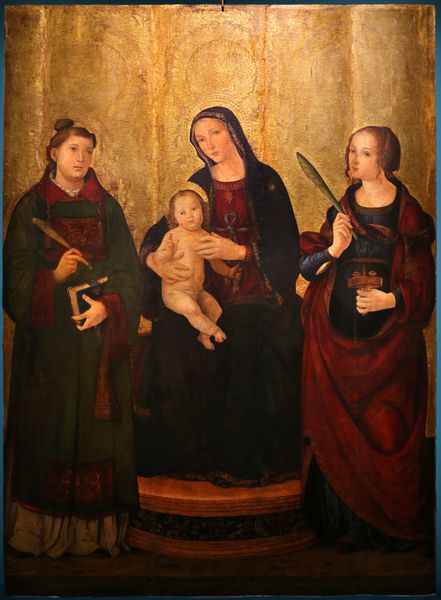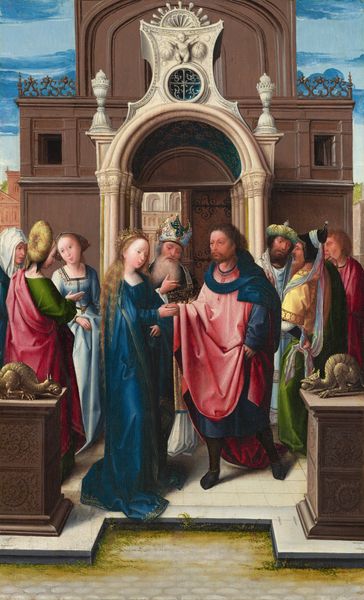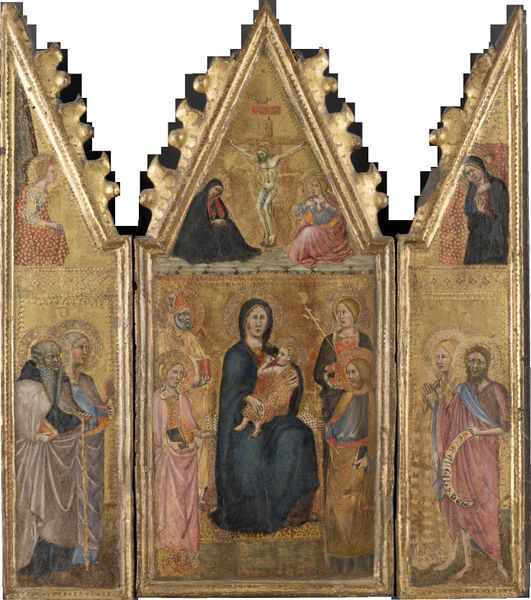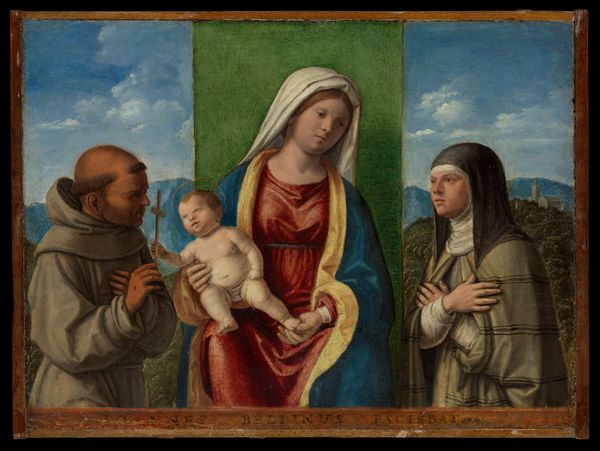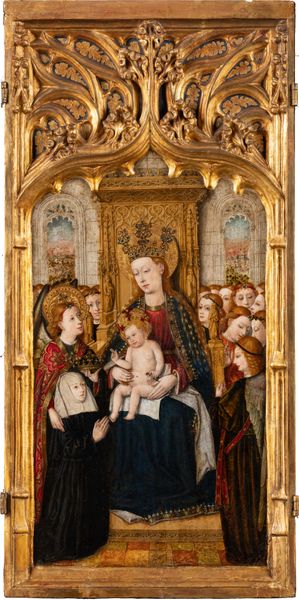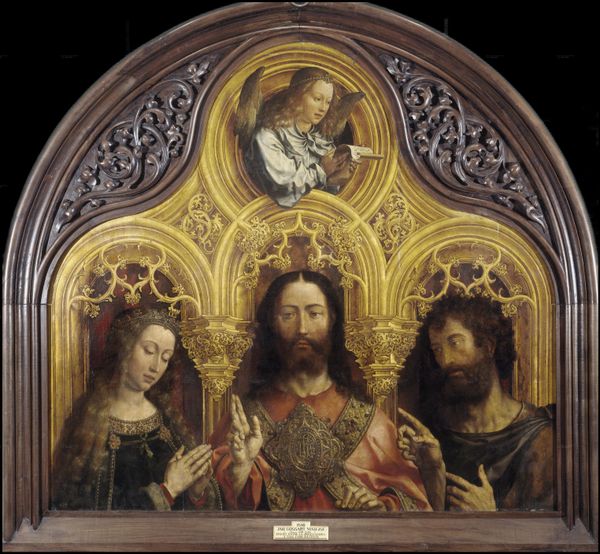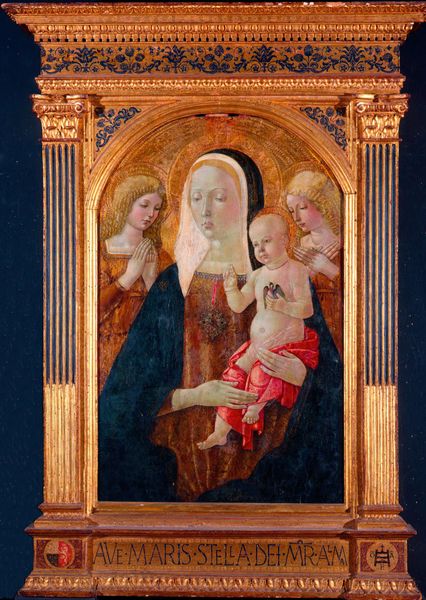
painting, oil-paint
#
portrait
#
painting
#
oil-paint
#
figuration
#
portrait reference
#
men
#
genre-painting
#
history-painting
#
northern-renaissance
#
portrait art
#
virgin-mary
#
fine art portrait
#
christ
Dimensions: Arched top, 6 1/8 x 4 3/4 in. (15.6 x 12.1 cm)
Copyright: Public Domain
Curator: "Christ Taking Leave of His Mother," painted by Gerard David sometime between 1495 and 1505, greets us today. It's oil on panel and currently resides at The Metropolitan Museum of Art. Editor: My gut reaction? Heartbreak. The scene is thick with unshed tears, a moment stretched taut between farewell and unbearable knowing. The tight framing amplifies this intensity. Curator: Absolutely. The figures are pressed into this shallow space, emphasizing the emotional weight of the moment. The gestures, though restrained, speak volumes about the impending sacrifice. Notice, for instance, Christ's slightly raised hand—a benediction, a farewell? Editor: More like a gentle push towards acceptance, maybe? It's like he's saying, "It's okay, let go." The color palette is really doing a lot of work too; it's somber, reserved… those blues and blacks... They suggest mourning without screaming it. Curator: Indeed. The figures' garments aren’t just clothing; they represent cultural and spiritual traditions. The dark robes Christ wears, versus the head coverings on the women, all rooted in very specific iconographic precedents meant to elicit familiarity and reverence from viewers of the period. And the gold background – a visual signifier for holiness. Editor: Right, the gold practically hums with significance. Even though the space feels claustrophobic, that shimmering gold suggests something eternal, maybe even… hope? Despite the grief, the shimmering details in the gold work on the frame itself lend an air of beauty to their sorrow. Curator: It suggests transcendence. Consider how David’s use of light catches the faces of those present, emphasizing their internal emotionality. Editor: And you can see those faces, even after centuries. I mean, you can feel their resignation. It's a heavy scene, for sure, but beautifully rendered in its pathos. Curator: It's a masterclass in emotional understatement and spiritual resonance. I think David was trying to use the emotional expression of each character in relation to Jesus, to help communicate his nature as both human and holy. Editor: Makes you wonder what that farewell was actually like, beyond the art, you know? Curator: Exactly, which invites us to imagine it in relationship to our experiences of loss and anticipation. Editor: Well, I am certainly feeling contemplative! Curator: Agreed, quite a lot to reflect on here.
Comments
No comments
Be the first to comment and join the conversation on the ultimate creative platform.
